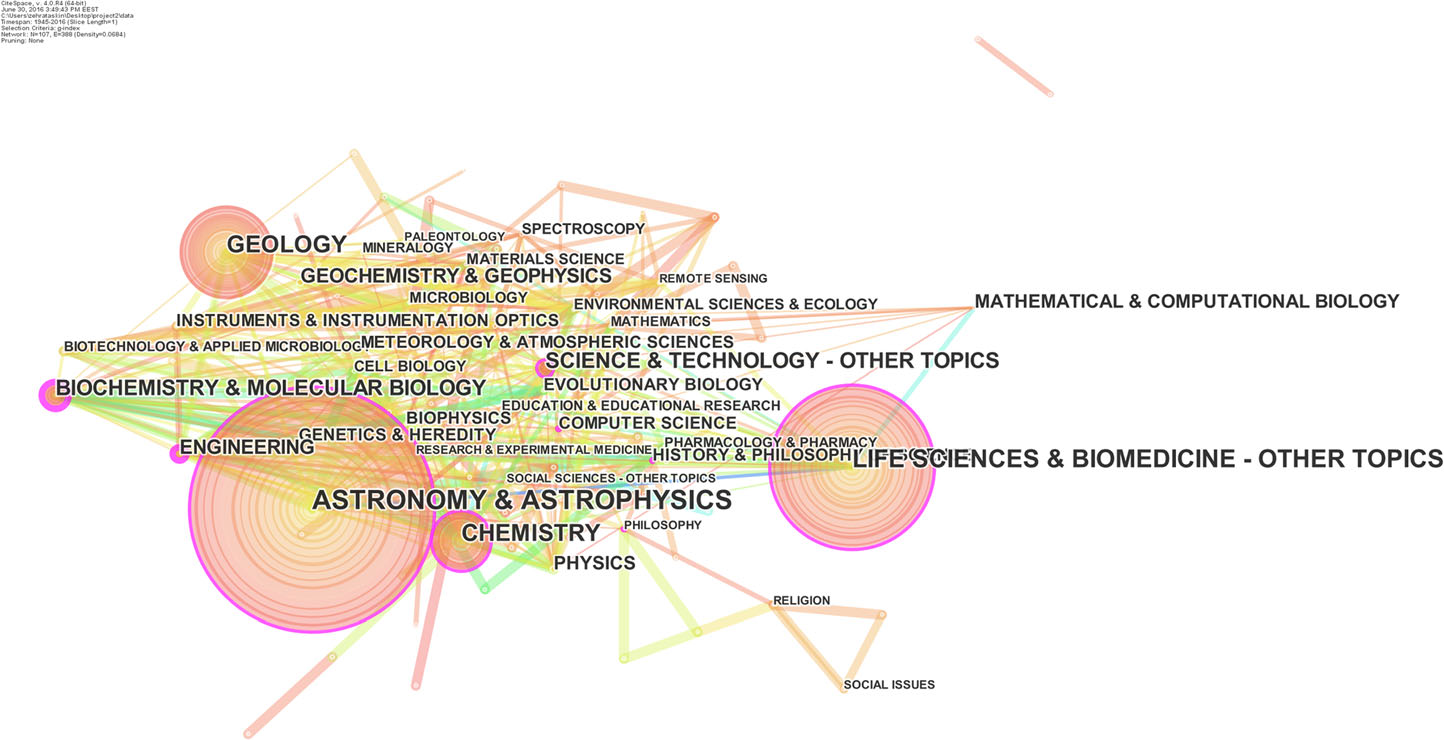-
A Bibliometric Analysis of Origins of Life Research
July 21, 2017 / Written by: Miki Huynh
A network map of Origins of Life-relevant subject categories extracted from published research journals. Source: A. AydinogluA study by Arsev Aydinoglu and Zehra Taşkın explores the growth and degrees of collaboration and interdisciplinarity in Origin(s) of Life (OoL) research using statistical analysis of science publications. The paper, Origins of Life Research: a Bibliometric Approach, is published in Origins of Life and Evolution of Biospheres.
The authors looked at a body of 126,105 unique publications and broke out a dataset of 5,647 publications tagged with the keywords Origin(s) of Life, astrobiology, exobiology, and prebiotic chemistry. From this data, they identified the most prolific authors, most cited articles, popular journals, and research trends. They also tracked the rise in OoL research in relation to factors such as the funding of astrobiology research by the NASA Astrobiology Institute, and mapped the increase in citations and connections between authors, institutions, countries, and keywords and concepts over time. Interdisciplinarity, the authors point out, is an essential part of expanding the OoL field.
The study was supported by grants from the ELSI Origins Network (EON), the John Templeton Foundation, and the Earth-Life Science Institute (ELSI) of the Tokyo Institute of Technology.
—-
Related stories:
Meta Musings on the Origins of Life
NASA Ranked 6th in Index of Most Collaborative Institutions of 2016
Studying Astrobiology: An Examination of Academic Publications at the NAI
- The NASA Astrobiology Institute Concludes Its 20-year Tenure
- Global Geomorphologic Map of Titan
- Molecular Cousins Discovered on Titan
- Interdisciplinary Consortia for Astrobiology Research (ICAR)
- The NASA Astrobiology Science Forum Talks Now on YouTube
- The NASA Astrobiology Science Forum: The Origin, Evolution, Distribution and Future of Astrobiology
- Alternative Earths
- Drilling for Rock-Powered Life
- Imagining a Living Universe
- Workshops Without Walls: Astrovirology